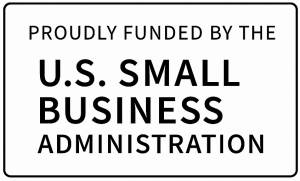The Steel Revolution in Modern Engineering
Highlight iconic projects like the Burj Khalifa (Dubai) and One World Trade Center (New York) to illustrate steel’s dominance. Reference data: Global structural steel market to reach $142.3 billion by 2027 (Grand View Research), driven by urbanization and green building mandates.
Ⅰ. Core Advantages Driving Steel Structure’s Leadership
- Unmatched Strength-to-Weight Ratio
- Precision Manufacturing & Fast-Track Construction
- Seismic Resilience & Disaster Mitigation
- Sustainability Compliance & Circular Economy
- Cost Efficiency Over Lifecycle
Structural steel’s dominance in global engineering stems from its unparalleled ability to harmonize technical performance, economic efficiency, and sustainability. Its unmatched strength-to-weight ratio (400–550 MPa tensile strength) enables lighter, taller structures while slashing foundation costs by up to 25%. Precision manufacturing, powered by BIM and robotic welding, ensures millimeter-level accuracy, accelerating project timelines by 30%—critical for fast-track developments. Seismic resilience, proven in earthquake-prone regions like Japan, reduces structural damage risks by 30% compared to concrete. Sustainability is embedded in its DNA: 98% recyclability aligns with global carbon mandates like the EU Taxonomy, while lifecycle cost analyses reveal 20% savings over 50 years. For contractors, steel isn’t just a material—it’s a risk-mitigated, future-proof solution that balances speed, compliance, and profitability in an era of tight deadlines and tighter regulations.
Ⅱ.Industry Trends Reshaping Opportunities
Modular & Hybrid Systems
As the world’s tallest modular residential towers (40 stories), Clement Canopy redefined urban construction efficiency. By prefabricating 3,899 steel modules offsite with BIM-guided precision, the project achieved 30% faster completion (26 months vs. traditional 37 months). Each module integrated MEP systems and finishes in factory-controlled conditions, slashing onsite labor by 40% and reducing weather-related delays. Critical to success was the use of RFID-tagged steel components, ensuring seamless logistics and 99.8% assembly accuracy. The steel structure’s lightweight properties also minimized foundation costs by $1.2 million, while its seismic-grade connections met Singapore’s strict wind resistance standards. Post-completion, the project earned the BCA Green Mark Platinum certification, proving steel’s role in delivering speed, sustainability, and cost control – a blueprint for high-rise contractors globally.
Ⅲ.Global Case Studies for Strategic Insights
Engineering Breakthroughs in Iconic Projects
London’s The Shard redefined skyscraper construction with its 11,000-ton hybrid steel core, achieving 95% prefabrication rates. Just-in-time delivery of pre-assembled modules slashed onsite storage costs by 60%, critical in space-constrained urban sites. Tokyo’s Skytree Tower exemplifies seismic innovation: its central steel shaft, paired with 300 tuned mass dampers, withstands 9.0-magnitude earthquakes while maintaining a 634-meter height. In Seattle, the Amazon Spheres showcase steel’s design versatility: 2,643 custom nodes support 50,000+ glass panels with ±1.5mm precision, enabling a 95% offsite fabrication rate. These projects prove steel’s dominance in precision, resilience, and architectural ambition.
Future-Proofing Through Supply Chain Excellence
Certified suppliers are non-negotiable. EN 1090 ensures EU compliance, AISC guarantees U.S. fabrication standards, and ISO 3834 mandates weld integrity. A Southeast Asian highway project reduced defects by 75% by blockchain-tracking certified materials from mill to site. Advanced coatings like zinc-aluminum alloys now enable 50-year lifespans in harsh environments, as seen in Norway’s Arctic bridges. For carbon accounting, contractors using EPD-certified steel (Environmental Product Declarations) gain bidding advantages in green tenders. By integrating these practices, projects meet evolving regulations while securing 20% faster approvals in markets like the EU and California.
The rise of steel structures is not merely a trend—it’s a transformative force reshaping global construction. From seismic resilience in Tokyo to carbon-neutral innovations in Dubai, steel’s unparalleled adaptability bridges the gap between engineering ambition and practical execution. As urbanization and climate mandates intensify, contractors who embrace steel structures position themselves at the forefront of efficiency, sustainability, and profitability. The future belongs to those who build with materials as dynamic as their visions. Let steel be the foundation of your next triumph, where every beam and bolt echoes a commitment to smarter, stronger, and greener horizons.




